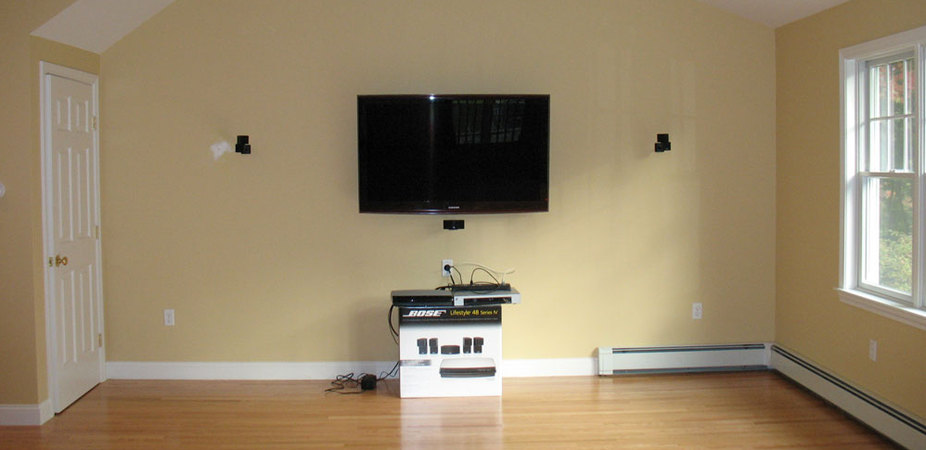 New technology – among other things – means our estimates of electricity consumption are based on old ideas.
New technology – among other things – means our estimates of electricity consumption are based on old ideas.
AUSTRALIA -- In 2012, National Electricity Market electricity consumption continued its four-year decline. Everyone seems surprised that electricity demand continues to decline despite population and the economy growing. This highlights the limits of economic forecasting and the lack of "bottom-up" modelling based on real activity.
Changes in technology mean the energy implications of new appliances have changed. For example, a household that bought a new TV in 2009 typically increased its TV energy usage significantly relative to their old TV. Today, the same decision can lead to a reduction in TV energy usage of up to 60%. This kind of change is occurring across business, industry, households and transport.
Decision-making and behaviour change are also evolving. On average, people are buying smaller houses. They are doing more to cut energy waste by switching things off and using energy more efficiently. Around 10% of Australian households are now solar electricity generators. New office equipment and lighting are much more efficient. And so on.
Analysts who look at historical energy consumption trends are really using a "lagging" indicator. The impacts of new investment decisions are swamped by the (poor) performance of the existing stock, while major behaviour changes are not modelled in detail.
We need to model behaviour in more detail. We need to focus energy forecasting on "leading" indicators, especially the performance of buildings and equipment being added to the stock, and the performance of the equipment that is being replaced.
 Total NEM electricity consumption. AEMO data; graph courtesy of greenmarkets.com.au
Total NEM electricity consumption. AEMO data; graph courtesy of greenmarkets.com.auThe nature of change involves a wide range of effects. Many modellers focus on factors such as the "rebound" effect, but ignore the effects that can amplify savings. These are technical, social and institutional. Consider some examples:
-
When efficient lighting and equipment is installed in an office building or house, cooling energy use (and peak demand) are reduced, because less heat is generated inside the building.
-
When water efficiency is improved, it often saves energy through reduced heating of water, or less pumping.
-
When markets for energy efficient products grow, economies of scale and "learning effects" drive cost reduction and further product performance improvement. The efficiency of delivery, installation and sale mechanisms increases. If consumers like the results, they tell others, who are then more likely to invest, driving a virtuous cycle.
-
When governments make regulations, such as requirements for more energy efficient buildings, innovation is accelerated, supply chains made more efficient, and profit margins reduced: these reduce the cost of compliance. Since Australia is well behind the leading countries, this innovation (and some of the innovators) may be imported from overseas, so it may happen very fast.
-
Redefining services and shifting the way they are provided can have profound effects on energy use. Physical stores are being replaced by on-line retailing. Low power devices such as tablets and advanced mobile phones are replacing computers. And so on.
However, complex factors can limit savings from individual changes. This can reinforce scepticism about the value of energy saving measures. For example, in many industrial sites, reducing steam usage may achieve unexpectedly low savings. This is often because other losses are unaffected and are large. But when enough savings accumulate to shut down a boiler, or to close off a length of steam distribution pipe, savings may suddenly increase because these "invisible losses" are avoided.
Systems can be very complex. For example, in many office buildings energy consumption by the fans and pumps used to distribute warm or cool air and water exceed the amount of energy actually used to cool or heat the building. Inflexible fans and pumps, losses from ducts and pipes and poor controls can undermine savings from improving the building fabric – until that equipment is replaced, when higher than expected savings can appear.
Indeed, analysis of industrial plants, commercial buildings and homes shows that often the "fixed energy overheads" can comprise a quarter to two thirds of total energy use. These are often overlooked but, when they are addressed, surprisingly large savings can appear.
One example in households is the trend away from gas storage hot water units to instantaneous (often called continuous) units. If a five star storage gas unit is replaced by an instantaneous unit with the same rating, in most cases there will be an energy saving. The storage unit has a fixed heat loss from the tank and a continuous pilot light: the amount of gas used is equivalent to supplying an extra 60 litres or more of hot water each day. The more water-efficient the household, the more significant is this fixed energy loss. Many small households use only 30 to 40 litres per day of hot water, so 60% or more of their gas usage is due to losses from their hot water unit. The instantaneous unit largely avoids these losses.
The human factor is also very important. There are many anecdotal stories about people who install solar electricity systems and suddenly become much more interested in energy efficiency. This can be attributed to improved information and the financial incentive of saving money. But it can also reflect a desire to assert control, and to "get back at" the energy companies!
Of course, it must also be acknowledged that many other factors may contribute to reduced electricity and energy demand, such as industrial restructuring being driven by the high exchange rate and changing industrial scale.
It seems that many complex factors are at work, delivering unexpectedly large energy savings. But we lack the data and analysis of these effects. So we may well continue to be surprised as energy use keeps declining.

